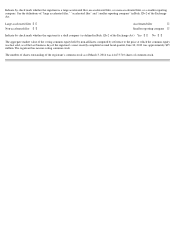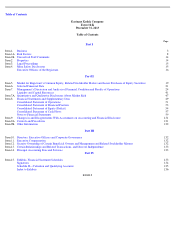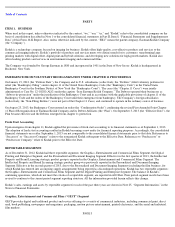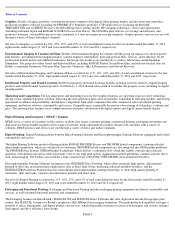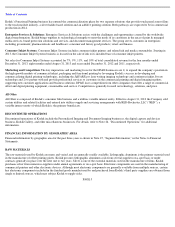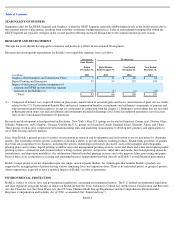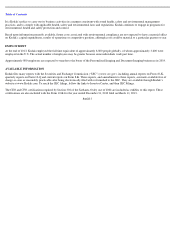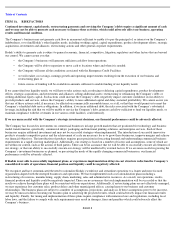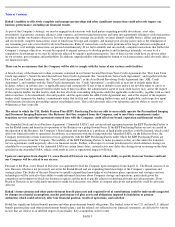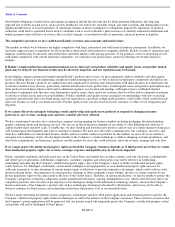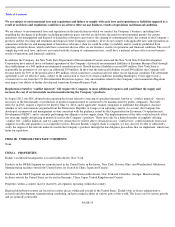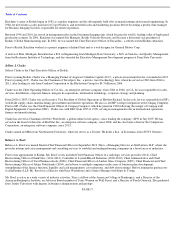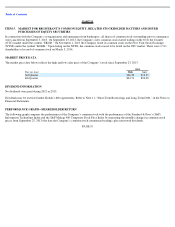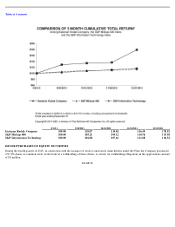Kodak 2013 Annual Report Download - page 13
Download and view the complete annual report
Please find page 13 of the 2013 Kodak annual report below. You can navigate through the pages in the report by either clicking on the pages listed below, or by using the keyword search tool below to find specific information within the annual report.
Table of Contents
In addition, third parties may claim that Kodak’s customers, licensees or other parties indemnified by us are infringing upon their intellectual
property rights. Such claims may be made by competitors seeking to block or limit our access to certain markets. Additionally, in recent years,
individuals and groups have begun purchasing intellectual property assets for the sole purpose of making claims of infringement and attempting
to extract settlements from large companies like ours. Even if we believe that the claims are without merit, such claims can be time consuming
and costly to defend and may distract management’s attention and resources. Claims of intellectual property infringement also might require us
to redesign affected products, enter into costly settlement or license agreements or pay costly damage awards, or face a temporary or permanent
injunction prohibiting us from marketing or selling certain of our products. Even if we have an agreement to indemnify us against such costs,
the indemnifying party may be unable to uphold its contractual obligations. If we cannot or do not license the infringed technology at all,
license the technology on reasonable terms or substitute similar technology from another source, our revenue and earnings could be adversely
impacted. Finally, we use open source software in connection with our products and services. Companies that incorporate open source software
into their products have, from time to time, faced claims challenging the ownership of open source software and/or compliance with open
source license terms. As a result, we could be subject to suits by parties claiming ownership of what we believe to be open source software or
noncompliance with open source licensing terms. Some open source software licenses require users who distribute open source software as part
of their software to publicly disclose all or part of the source code to such software and/or make available any derivative works of the open
source code on unfavorable terms or at no cost. Any requirement to disclose the Company’s source code or pay damages for breach of contract
could be harmful to our business results of operations and financial condition.
Weakness or worsening of global economic conditions could adversely affect our financial performance and liquidity.
The global economic environment can adversely affect sales of our products and profitability. Global financial markets have been experiencing
volatility. Economic conditions could accelerate any decline in demand for traditional products, which could also place pressure on our results
of operations and liquidity. There is no guarantee that anticipated economic growth levels in markets that have experienced some economic
strength will continue in the future, or that we will succeed in expanding sales in these markets. In addition, accounts receivable and past due
accounts could increase due to a decline in our customers’ ability to pay as a result of an economic downturn, and the Company’s liquidity,
including our ability to use credit lines, could be negatively impacted by failures of financial instrument counterparties, including banks and
other financial institutions. If global economic weakness and tightness in the credit markets exists, worsens or is attenuated, the Company’s
profitability and related cash generation capability could be adversely affected and, therefore, affect the Company’s ability to meet the
Company’s anticipated cash needs, impair the Company’s liquidity or increase the Company’s costs of borrowing.
If we cannot attract, retain and motivate key employees, Kodak’s revenue and earnings could be harmed.
In order for us to be successful, we must continue to attract, retain and motivate executives and other key employees, including technical,
managerial, marketing, sales, research and support positions. Hiring and retaining qualified executives, research and engineering professionals,
and qualified sales representatives, particularly in Kodak’s targeted growth markets, are critical to our future. The Company intends to hire a
new Chief Executive Officer, and our ability to attract and retain a new Chief Executive Officer capable of leading the Company is critical to
our future success. If we do not attract qualified individuals, and retain key leaders, executives and employees, our business could be harmed.
Due to the nature of the products we sell and Kodak’s worldwide distribution, we are subject to changes in currency exchange rates,
interest rates and commodity costs that may adversely impact our results of operations and financial position.
As a result of Kodak’
s global operating and financing activities, we are exposed to changes in currency exchange rates and interest rates, which
may adversely affect our results of operations and financial position. Exchange rates and interest rates in markets in which we do business tend
to be volatile and at times, our sales can be negatively impacted across all of the Company’s segments depending upon the value of the U.S.
dollar, the Euro and other major currencies. In addition, the Company’s products contain, aluminum, silver, petroleum based or other
commodity-based raw materials, the prices of which have been and may continue to be volatile. If the global economic situation remains
uncertain or worsens, there could be further volatility in changes in currency exchange rates, interest rates and commodity prices, which could
have negative effects on our revenue and earnings.
An inability to provide competitive financing arrangements to Kodak’s customers or extension of credit to customers whose
creditworthiness deteriorates, could adversely impact our revenues, profitability and financial position.
The competitive environment in which we operate may require us to facilitate or provide financing to our customers in order to win a contract.
Customer financing arrangements may cover all or a portion of the purchase price for the Company’
s products and services. We may also assist
customers in obtaining financing from banks and other sources. Our success may be
PAGE 11


